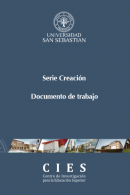
Vitamina D y su relación con la ubicación anatómica de la fractura de cadera en adultos mayores chilenos hospitalizados
| PROCEDENCIA(S): | Ciencia y Medicina, Ciencias de la Salud, Ciencias para el Cuidado de la Salud, USS Santiago. |
|---|---|
| CATEGORÍA(S): | Anatomía y Morfología, Geriatría y Gerontología, Medicina Clínica, Nutrición y Dietética. |
| AUTOR(ES): | José Luis Dinamarca Montecinos / Alejandra Vásquez Leiva / Samuel Durán Agüero / Ramona Rubio Herrera. |
| TIPO DE MATERIAL: | Artículos, Investigación. |
| ARCHIVO: |
 Reconocimiento CC BY. Esta obra está bajo una Licencia Creative Commons Reconocimiento CC BY 4.0 Internacional.
Reconocimiento CC BY. Esta obra está bajo una Licencia Creative Commons Reconocimiento CC BY 4.0 Internacional.
In older adults, deficit of Vitamin D and hip fractures are common. There exists relationships between both conditions, and it have been shown that supplementation of Vitamin D improve prognosis of hip fractures. In the case of Chile, information about relationship between VitaminD and hip fractures is scarce.Objective: quantify plasma levels of vitamin D and relate them to the anatomical location of hip fracture.Methods: cross-sectional study. 222 Chilean adults ≥60 years, hospitalized for hip fracture between June, 2014 and June, 2015. We use data of medical records about gender, age, seasonality and anatomical location of hip fracture (intra and extracapsular). We measure plasmatic levels of VitaminD (PLVD) and glomerular filtration rate (GFR) (MDRD-6). Kolmogorov-Smirnov test and non-parametric test were used. For determine relations between PLVD and anatomical location we use linear regression.Results: there was a predominance of women (80.6%). The average age was 80.7 years (SD=7.8). Intracapsular hip fractures were 43.2%. 80% of the sample presents Vitamin D in deficitary levels (n = 180). PLVD average was 13.3 ng/cc (SD=6.7), in subjects with intracapsular fractures were significantly lower (p<0.001). Conclusions: PLVD in subjects with hip fracture should be monitored, as there are differences according to anatomical location of the fracture. This precedent could favor the treatment and recovery of subjects presenting for the first time hip fracture.


